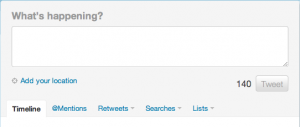
The public’s use of technology, more specifically the Internet has become second nature. Now the development of technology is no longer shaped by the way people communicate, rather the way people communicate is determined by technological platforms. There has been an understated shift in the ways we convey emotions and engage in social conventions.
Scenario: It’s your friend’s birthday. You have two options;
- Call them up and wish them a happy birthday
- Post on Instagram and share how unshakable your friendship is through a heartfelt caption and multiple emojis.
I wouldn’t be surprised if you chose the second option. According to Sherry Turkle in her piece Alone Together; “Online connections were first conceived as a substitute for face-to-face contact, when the latter was for some reason impractical. But very quickly [they] became the connection of choice.” In fact children of the 90s and beyond are more accustomed to experiencing through five by two inch smart phone screens. But why is it so easy to scroll through hundreds of websites, like dozens of posts, and endlessly swipe through pivotal moments on a daily basis, without so much as realizing how it’s happening? Simple: the layout, the distractions and the tones have become like wallpaper to us. We’ve seen it so often that we don’t notice it’s there, yet we are still comfortable standing in the room.
The visual design of a blog, social media account or website are critically to the popularity of the page. In his article “Why We Love Beautiful Things” Lance Hosey explains how people tend to react to a shape known as the golden rectangle. He suggests that, “the ideal layout of a paragraph of text, the one most conducive to reading and retention. This simple shape speeds up our ability to perceive the world, and without realizing it, we employ it wherever we can.” (Hosey 2013) The structure of this golden rectangle has been adopted by all major social media platforms. The golden rectangle is evident in Twitter’s text box design, the outline of its characters and how videos are posted.

The next ingredients for an effective site are hyperlinks and media. Users need distractions in order to remain engaged. Hyperlinks give site visitors permission to explore other exciting sides of the web but the option to return to their origin. In addition, media in the form of gifs, pictures and imbedded ads give viewers a break from the tiring action of moving their eyes from side to side as their thumbs scroll down. They are also interactive, and the interfacing of platforms is the literal definition of the Internet. Not only do users love interactive activities, but gifs also make it easier to illustrate points of view;

Finally, the website’s tone is important to how users respond to it. “Most blogs are single-voice narratives made up of mostly brief posts that blend fact with personal” (Bianca Carroll, 2010) Although people respond to personal and informal tones, they fawn over ability to create their own narratives. Establishing online identities is what makes the Internet an exciting place to be. This is how channels such as Snapchat, Twitter, Instagram and various others are populated and marinated. These sites capitalize on the growing issue of narcissism that millennial and gen Xers are developing. Truly successful platforms no longer tell people how to feel, they ask users how they feel. And in the spirit of Twitter, “What’s happening?”

https://scaldingandchill.wordpress.com/blog/